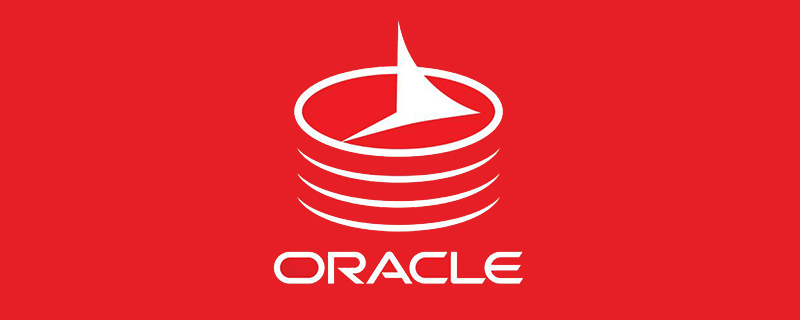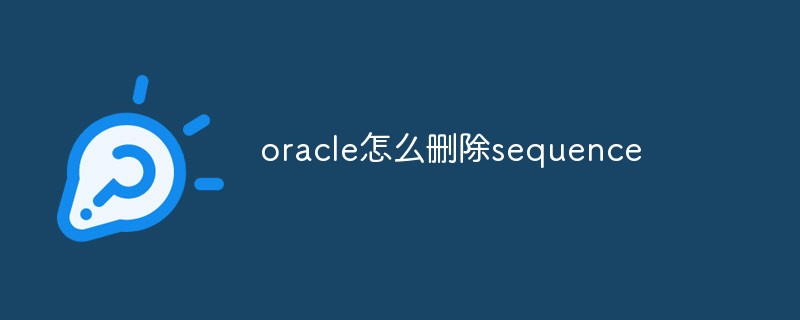
TL ;DR
Bitcoin’s original design prioritized security and decentralization over complex features like smart contracts and DeFi applications. Therefore, Yala created a modular architecture on the Ordinals protocol while integrating the decentralized indexer network and Oracle to introduce smart contract capabilities to Bitcoin to issue the stablecoin $YU. Based on this modular design, $YU is able to freely participate in DeFi activities on any chain, thereby unlocking Bitcoin’s huge liquidity.
Yala’s goal is to build a modular DeFi yield aggregator for Bitcoin, through mechanisms such as a federated voting indexer (eventually a fully decentralized indexer) and a Bitcoin vault with threshold signatures To ensure security and decentralization, while ensuring democratic participation and decentralized governance through the community. Yala hopes to be the preferred path and solution for achieving mass adoption of decentralized finance on the world’s most resilient blockchain, Bitcoin, while maintaining its core principles of security and decentralization.
Limitations of Bitcoin in Smart Contracts and Development of DeFi
Bitcoin is the most groundbreaking decentralized cryptocurrency, and its design emphasizes security and decentralization. Its scripting language was originally designed to facilitate simple peer-to-peer value transfers rather than complex financial functions. While the DeFi ecosystem is flourishing on more flexible blockchains such as Ethereum, Bitcoin cannot serve as infrastructure to meet its needs due to its architectural limitations, including block size and frequency limitations.
The blockchain scalability dilemma highlights the challenge of striking a balance between security, decentralization, and scalability, any one of which is critical for DeFi applications. Bitcoin prioritizes the first two and therefore is unable to meet the high transaction volume, real-time requirements of DeFi. There is no doubt that Bitcoin holders need a secure and seamless mechanism to participate in the growing DeFi ecosystem, and this need has long been met by users of Ethereum and other EVM-compatible blockchains.
Ethereum has implemented scalability solutions such as sharding, rollups, and modularity. Bitcoin has conservatively explored the expansion of second-layer solutions without compromising its concept. However, if it wants to fully embrace DeFi and bring benefits to holders, Bitcoin must consider the following strategies:
1. Enhance DeFi functions: Bitcoin can also explore sharding, Rollups and other scalability solution to enhance its DeFi capabilities while maintaining its fundamental principles of security and decentralization. Careful implementation and rigorous testing will ensure that the integrity and decentralization of the network are not compromised.
2. Embrace modularity: Modular design principles can introduce new features and functionality tailored for DeFi without compromising the security and decentralization of the core protocol. This will allow Bitcoin to evolve and adapt to the ever-changing DeFi environment, providing Bitcoin holders with the opportunity to generate revenue and participate in the DeFi ecosystem.
3. Second-layer scaling solutions: Bitcoin developers focus on second-layer solutions, such as the Lightning Network and sidechains, to enhance scalability outside the main chain. However, these solutions add complexity and dependence on independent governance protocols. In order to truly embrace DeFi and provide a smooth revenue generation experience for Bitcoin holders, Bitcoin may need to explore more integrated and user-friendly solutions.
As the DeFi ecosystem develops, Bitcoin must remain flexible and innovative in order to provide its holders with the same opportunities as other ecological users to participate in the evolving DeFi ecosystem. This requires innovative people in the ecosystem to be able to understand and foresee the needs of the rapidly developing Defi ecosystem while being consistent with the core principles of Bitcoin when formulating strategies. Often, this requires a decentralized, accessible, and economically empowering approach to individuals.
$YU: A cross-chain yield stablecoin based on Bitcoin
The rise of DeFi has opened up new opportunities for financial innovation, but Bitcoin’s architectural limitations prevent it from fully participating in this rapidly growing ecosystem . Yala’s solution is to leverage the unique properties of Bitcoin and introduce DeFi capabilities, focusing on providing a Bitcoin-backed stablecoin that can natively earn revenue on multiple chains.
Ordinals Protocol: The Opportunity for Bitcoin DeFi
Inscription is a groundbreaking innovation enabled by the Ordinals Protocol, which allows digital assets to be issued and managed directly on the Bitcoin blockchain. By assigning a unique identifier to each satoshis (the smallest unit of Bitcoin), Inscription enables the creation of non-fungible tokens (NFTs) and other digital assets on the Bitcoin network, including Yala’s Bitcoin-based stablecoin.
The Meta protocol based on Ordinals (BRC -20, BRC -100, BRC -420, etc.) allows the Bitcoin network to integrate indexers, paving the way for the development of a real DeFi ecosystem on Bitcoin. .
Yala Stablecoin based on Bitcoin: Earn income across chains
Yala’s modular design introduces programmable smart contracts and DeFi applications to Bitcoin, of course, including this, which can be used in Earn income on multiple chains with Bitcoin’s native stablecoin $YU. For detailed technical design, please read Yala’s white paper. By leveraging a strong EVM-free security framework like Ethereum or Solana, Yala’s stablecoin products, including lending/borrowing protocols, liquidity pools and governance contracts, are backed by formal verification to ensure mathematical correctness.
Through the Bitcoin native stablecoin $YU, users can participate in DeFi opportunities on various blockchain networks and earn income without sacrificing the security and decentralization principles of the Bitcoin network.
STRONG SECURITY AND DECENTRALIZATION
Yala’s solutions prioritize security and decentralization, consistent with the fundamental principles of Bitcoin. The indexer network implemented by the federated voting indexer mitigates the risks of centralized BRC-20 indexing, and strict data verification and consensus protocols ensure the reliability and integrity of the maintained token balance information. It is worth noting that the federated voting indexer is an interim solution, and Yala will be committed to promoting the construction of decentralized indexers.
The partnership with Nubit provides additional data availability verification for indexer behavior, while the BRC-20 black and white module separation ensures security for deposit and withdrawal transactions.
Execution Layer and Oracle Network
At the execution layer, Bitcoin Asset Management utilizes Bitcoin Vaults that use threshold signatures to ensure strong security with no single point of failure. Yala’s decentralized oracle network also provides tamper-proof, real-time price data, which is critical for managing liquidations and maintaining stablecoin pegs.
By introducing a Bitcoin-based stablecoin that can earn revenue on multiple chains, Yala is unlocking Bitcoin’s potential in the rapidly growing DeFi ecosystem. This approach combines the strong security and decentralization of Bitcoin with the innovation and flexibility of DeFi, creating a powerful, user-centric blockchain ecosystem for a diverse digital economy.
Building a True DeFi Ecosystem for Bitcoin
At Yala, our vision is to create a prosperous, open ecosystem that unleashes the full potential of Bitcoin DeFi.
1. Unleashing the untapped potential of Bitcoin assets: Yala is committed to unlocking the full potential of DeFi on Bitcoin. With the Bitcoin-backed $YU stablecoin, we will provide Bitcoin holders with the benefits native to all other chains.
2. Promote the democratization of DeFi participation: Our vision is to promote the democratization of DeFi so that any individual and organization can participate in a transparent, autonomous, and decentralized financial system. Our goal is to build an open ecosystem where various DeFi applications can interact and combine seamlessly, driving innovation, collaboration, and shared value creation.
3. Support the decentralized governance of the lending protocol: We will continue to work hard for decentralization and community governance, transforming the governance structure of our lending protocol into a decentralized autonomous organization (DAO), Enable the wider community to actively participate in the evolution of Yala ecology. We aspire to create a self-sustaining, resilient, and growing DeFi ecosystem on Bitcoin through openness and collaboration.
4. Exploring Bitcoin’s DeFi field: Yala’s ultimate goal is to build itself into Bitcoin’s outstanding DeFi infrastructure. We envision a future where individuals and organizations have access to a wide range of secure, transparent and decentralized financial services, products and opportunities within the Bitcoin ecosystem.
We will work together to build a true DeFi ecosystem on the world's most secure and resilient blockchain - Bitcoin, promote the large-scale adoption of decentralized finance, and open up a world full of opportunities .
About Yala
Yala is a decentralized financial protocol based on Bitcoin’s native stablecoin YU, which opens up Bitcoin liquidity. As a powerful asset and liquidity enhancement tool, the stablecoin $YU operates across multiple ecosystems, increasing efficiency without the need to bridge or reconfigure the underlying Bitcoin. Yala empowers and unlocks liquidity for Bitcoin holders and ecosystem participants while maintaining the security of Bitcoin infrastructure.
The above is the detailed content of Yala: Linking Bitcoin Liquidity to Interest-Bearing Stablecoins. For more information, please follow other related articles on the PHP Chinese website!
 什么是oracle asmApr 18, 2022 pm 04:16 PM
什么是oracle asmApr 18, 2022 pm 04:16 PMoracle asm指的是“自动存储管理”,是一种卷管理器,可自动管理磁盘组并提供有效的数据冗余功能;它是做为单独的Oracle实例实施和部署。asm的优势:1、配置简单、可最大化推动数据库合并的存储资源利用;2、支持BIGFILE文件等。
 oracle怎么查询所有索引May 13, 2022 pm 05:23 PM
oracle怎么查询所有索引May 13, 2022 pm 05:23 PM方法:1、利用“select*from user_indexes where table_name=表名”语句查询表中索引;2、利用“select*from all_indexes where table_name=表名”语句查询所有索引。
 Oracle怎么查询端口号May 13, 2022 am 10:10 AM
Oracle怎么查询端口号May 13, 2022 am 10:10 AM在Oracle中,可利用lsnrctl命令查询端口号,该命令是Oracle的监听命令;在启动、关闭或重启oracle监听器之前可使用该命令检查oracle监听器的状态,语法为“lsnrctl status”,结果PORT后的内容就是端口号。
 oracle全角怎么转半角May 13, 2022 pm 03:21 PM
oracle全角怎么转半角May 13, 2022 pm 03:21 PM在oracle中,可以利用“TO_SINGLE_BYTE(String)”将全角转换为半角;“TO_SINGLE_BYTE”函数可以将参数中所有多字节字符都替换为等价的单字节字符,只有当数据库字符集同时包含多字节和单字节字符的时候有效。
 oracle怎么删除sequenceMay 13, 2022 pm 03:35 PM
oracle怎么删除sequenceMay 13, 2022 pm 03:35 PM在oracle中,可以利用“drop sequence sequence名”来删除sequence;sequence是自动增加数字序列的意思,也就是序列号,序列号自动增加不能重置,因此需要利用drop sequence语句来删除序列。
 oracle怎么查询数据类型May 13, 2022 pm 04:19 PM
oracle怎么查询数据类型May 13, 2022 pm 04:19 PM在oracle中,可以利用“select ... From all_tab_columns where table_name=upper('表名') AND owner=upper('数据库登录用户名');”语句查询数据库表的数据类型。
 oracle查询怎么不区分大小写May 10, 2022 pm 05:45 PM
oracle查询怎么不区分大小写May 10, 2022 pm 05:45 PM方法:1、利用“LOWER(字段值)”将字段转为小写,或者利用“UPPER(字段值)”将字段转为大写;2、利用“REGEXP_LIKE(字符串,正则表达式,'i')”,当参数设置为“i”时,说明进行匹配不区分大小写。
 Oracle怎么修改sessionMay 13, 2022 pm 05:06 PM
Oracle怎么修改sessionMay 13, 2022 pm 05:06 PM方法:1、利用“alter system set sessions=修改后的数值 scope=spfile”语句修改session参数;2、修改参数之后利用“shutdown immediate – startup”语句重启服务器即可生效。

Hot AI Tools

Undresser.AI Undress
AI-powered app for creating realistic nude photos

AI Clothes Remover
Online AI tool for removing clothes from photos.

Undress AI Tool
Undress images for free

Clothoff.io
AI clothes remover

AI Hentai Generator
Generate AI Hentai for free.

Hot Article

Hot Tools

PhpStorm Mac version
The latest (2018.2.1) professional PHP integrated development tool

SublimeText3 Mac version
God-level code editing software (SublimeText3)

mPDF
mPDF is a PHP library that can generate PDF files from UTF-8 encoded HTML. The original author, Ian Back, wrote mPDF to output PDF files "on the fly" from his website and handle different languages. It is slower than original scripts like HTML2FPDF and produces larger files when using Unicode fonts, but supports CSS styles etc. and has a lot of enhancements. Supports almost all languages, including RTL (Arabic and Hebrew) and CJK (Chinese, Japanese and Korean). Supports nested block-level elements (such as P, DIV),

Notepad++7.3.1
Easy-to-use and free code editor

Safe Exam Browser
Safe Exam Browser is a secure browser environment for taking online exams securely. This software turns any computer into a secure workstation. It controls access to any utility and prevents students from using unauthorized resources.







